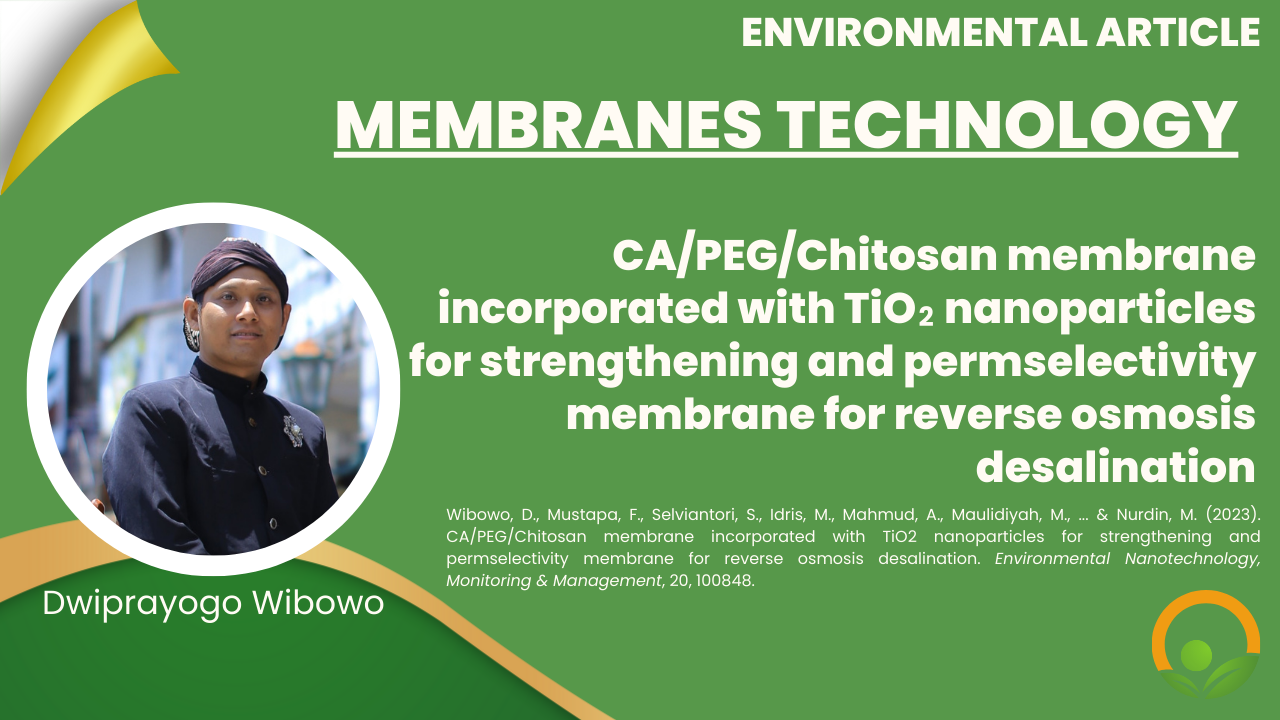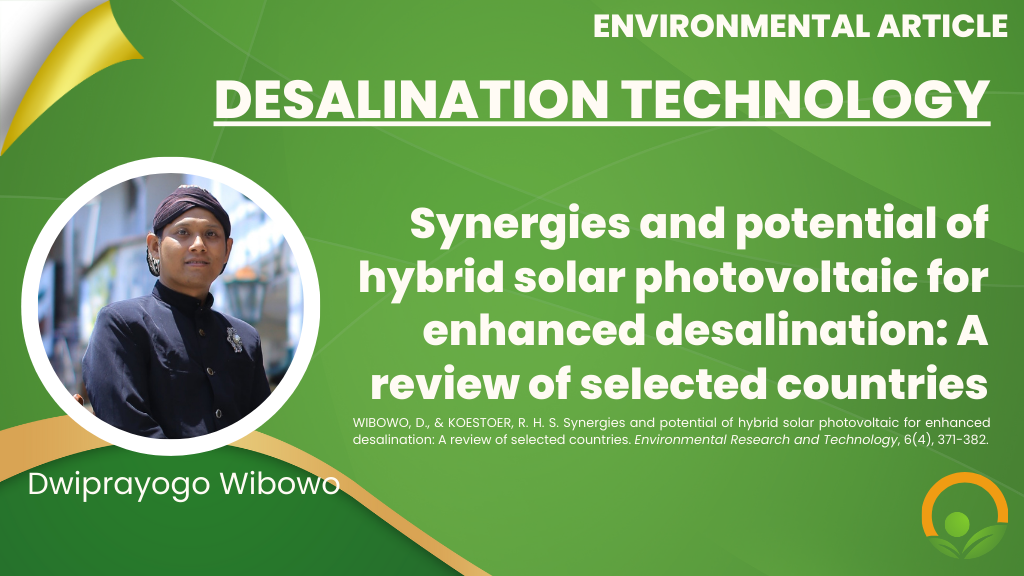
CA/PEG/chitosan membrane incorporated with TiO2 nanoparticles for strengthening and permselectivity membrane for reverse osmosis desalination
In this paper, we describe the fabrication, characterization, and performance tests of CA/PEG/Chitosan membrane incorporated TiO2 nanoparticles in a ROD system to reduce salt content in seawater. The preparation of CA/PEG/Chitosan-TiO2-NPs was conducted by blending method under various masses of TiO2-NPs (0.5 g; 0.75 g; and 1.0 g). Based on our experiment, we report the presence functional group of Ti-O-Ti bonds shown under the wavenumber range of 671–711 cm−1. Several wavenumbers have also indicated the presence of functional groups from CA/PEG/chitosan such as –OH, C = O, C-H, and NH2. Uniquely, morphological analysis shows that the pore size formed is 10 nm-1000 nm (0.01 µm-1.00 µm) after adding TiO2-NPs to the CA/PEG/Chitosan membrane. This is evidenced by the XRD pattern, which shows an increased XRD pattern with a high crystallinity phase. Strengthening tests on the fabricated membranes were successfully evaluated and showed that the addition of TiO2 affected the strength of the membrane. The evaluation of the membrane performance test found that the addition of TiO2-NPs mass incorporated into the CA/PEG/Chitosan membrane decreased the value of water flux, pH, and salinity. Meanwhile, there was an increase in the percentage value of salt rejection. This proves that the performance of the CA/PEG/Chitosan-TiO2-NPs membrane increases durability and permselectivity as filter materials for the ROD system.
Access the full text at the following link: https://www.sciencedirect.com/science/article/abs/pii/S2215153223000727


